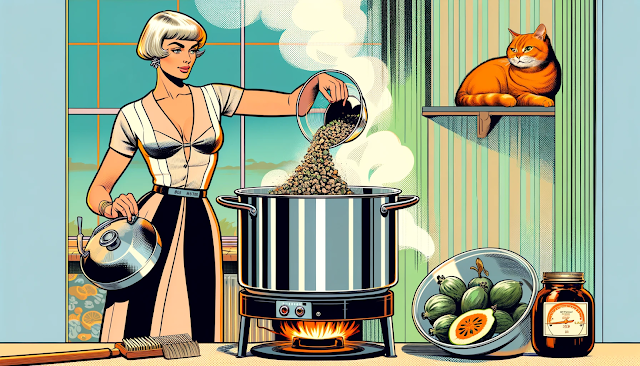This article embarks on an exploration of malt tin longevity, shedding light on what every homebrewer should know to ensure the essence of their beer remains uncompromised.


The Essence of Malt Tins in Brewing Kits
Malt tins contain malt extract, which is concentrated wort from malted grains that have been processed to remove most of the water content. This extract is the backbone of many brewing kits, offering a simplified and consistent base for the beer-making process.There are two primary types of malt extracts: liquid malt extract (LME), which is thick and syrup-like, and dry malt extract (DME), which is powdered. Both serve the same purpose but differ in concentration and handling.
The inherent shelf life of malt extract can be considerable, often ranging from one to two years if unopened. However, once the seal is broken, the countdown accelerates.
Usage: Use malt extracts as soon as possible after opening. If you must store them, consider transferring the extract to a vacuum-sealed container.
The shelf life of malt tins influences the quality of the beer produced. Fresh malt extracts contribute to a more vibrant and intended flavor profile, while aged extracts can introduce off-flavors and inconsistencies in the beer. From a cost perspective, understanding and adhering to malt tin shelf life can save homebrewers from wasted batches and ingredients.
In the journey of homebrewing, the malt tin is more than just an ingredient—it is the foundation upon which the character of the beer is built. Recognizing the nuances of malt tin longevity is not merely a matter of meticulousness but a dedication to the craft of brewing. By mastering the storage and handling of malt extracts, brewers can ensure that each batch of beer is as fresh and flavorful as intended, honoring the time-honored tradition of brewing excellence.
The Lifespan of Malt Tins: An Interplay of Factors
The inherent shelf life of malt extract can be considerable, often ranging from one to two years if unopened. However, once the seal is broken, the countdown accelerates.
Two factors come into play:
Packaging Quality: Oxygen-barrier packaging can extend the shelf life by preventing oxidation, while standard cans or bags may not offer the same level of protection.
Storage Conditions:Temperature: Cooler temperatures slow down the degradation process, whereas warmer environments hasten it.
Storage Conditions:Temperature: Cooler temperatures slow down the degradation process, whereas warmer environments hasten it.
Recognizing Malt Tin Expiry
Malt tins do not last indefinitely, and their spoilage can manifest in several ways:
- Visual Changes: Discoloration or the presence of mold indicates spoilage.
- Aroma: A sour or off smell can signal that the malt has gone bad.
- Flavor Profile: Any deviations from the expected sweet and malty flavor can be a sign of deterioration.
- Consistency: Malt extract that has hardened or crystallized may be past its prime.
Prolonging the Shelf Life of Malt Tins
To maximize a malt tin's lifespan, one must adhere to best practices:Proper Storage: Keep unopened malt tins in a cool, dry, and dark place. Once opened, seal them tightly to prevent air and moisture from entering.
Usage: Use malt extracts as soon as possible after opening. If you must store them, consider transferring the extract to a vacuum-sealed container.
The shelf life of malt tins influences the quality of the beer produced. Fresh malt extracts contribute to a more vibrant and intended flavor profile, while aged extracts can introduce off-flavors and inconsistencies in the beer. From a cost perspective, understanding and adhering to malt tin shelf life can save homebrewers from wasted batches and ingredients.
In the journey of homebrewing, the malt tin is more than just an ingredient—it is the foundation upon which the character of the beer is built. Recognizing the nuances of malt tin longevity is not merely a matter of meticulousness but a dedication to the craft of brewing. By mastering the storage and handling of malt extracts, brewers can ensure that each batch of beer is as fresh and flavorful as intended, honoring the time-honored tradition of brewing excellence.

